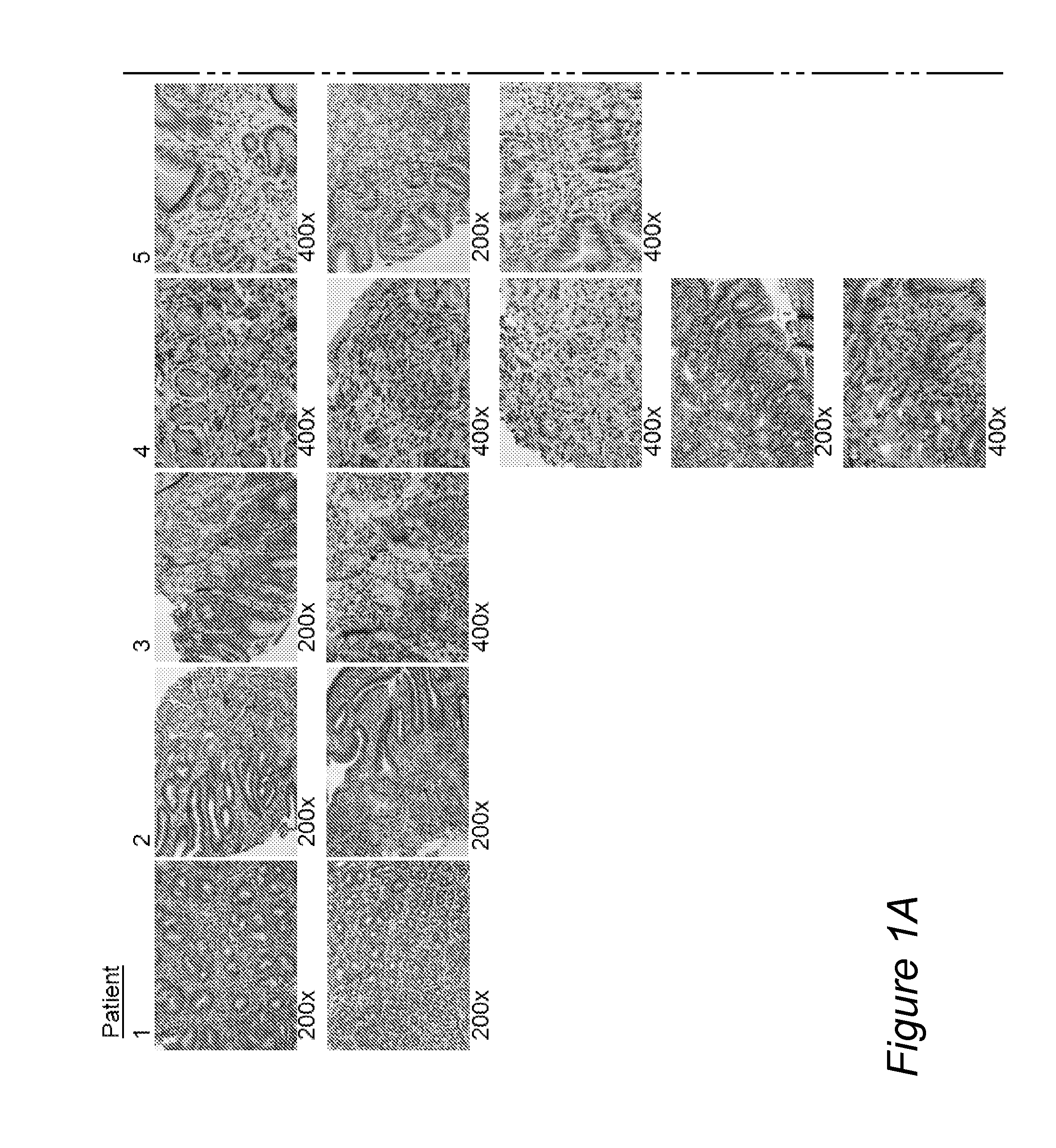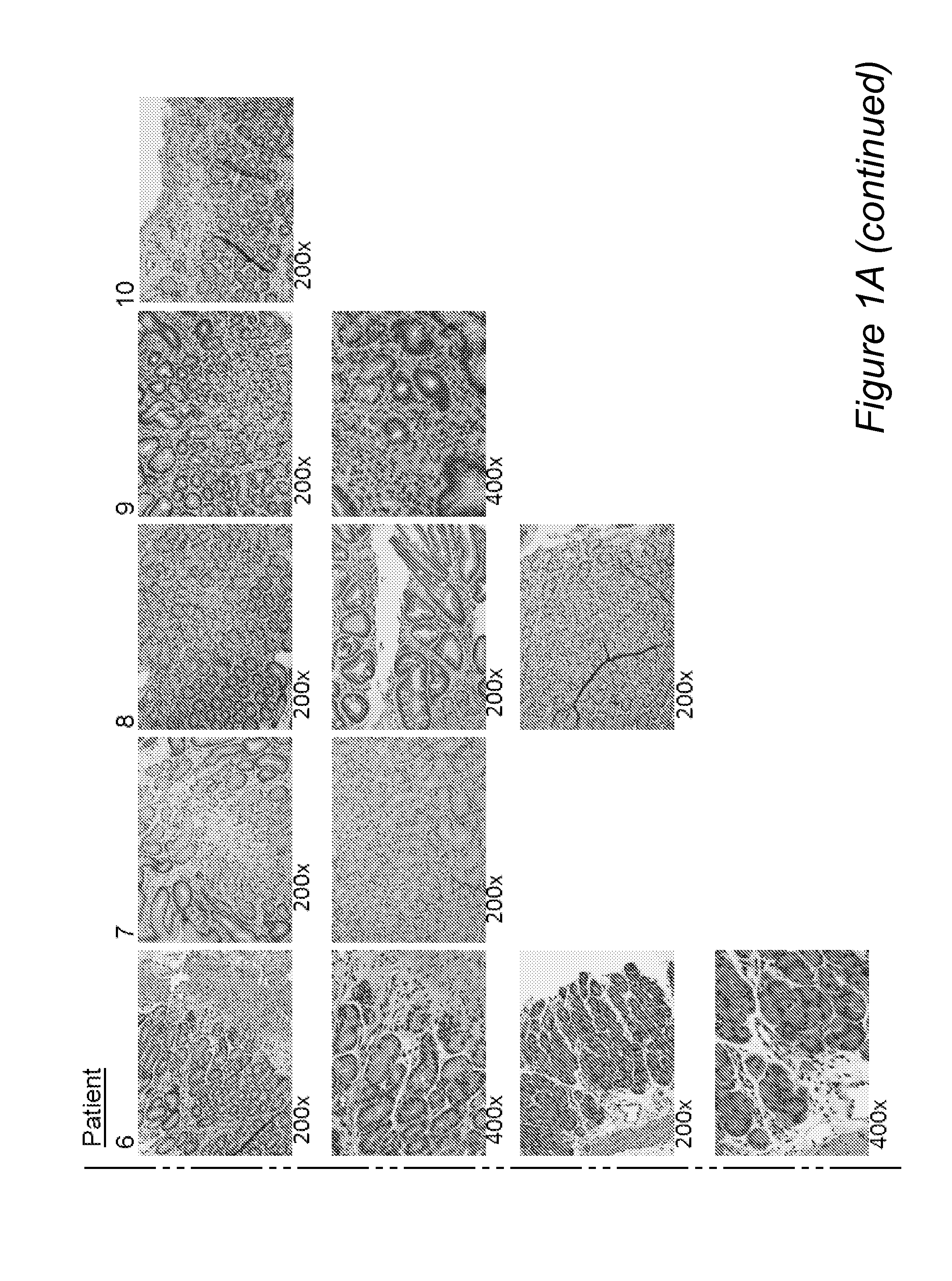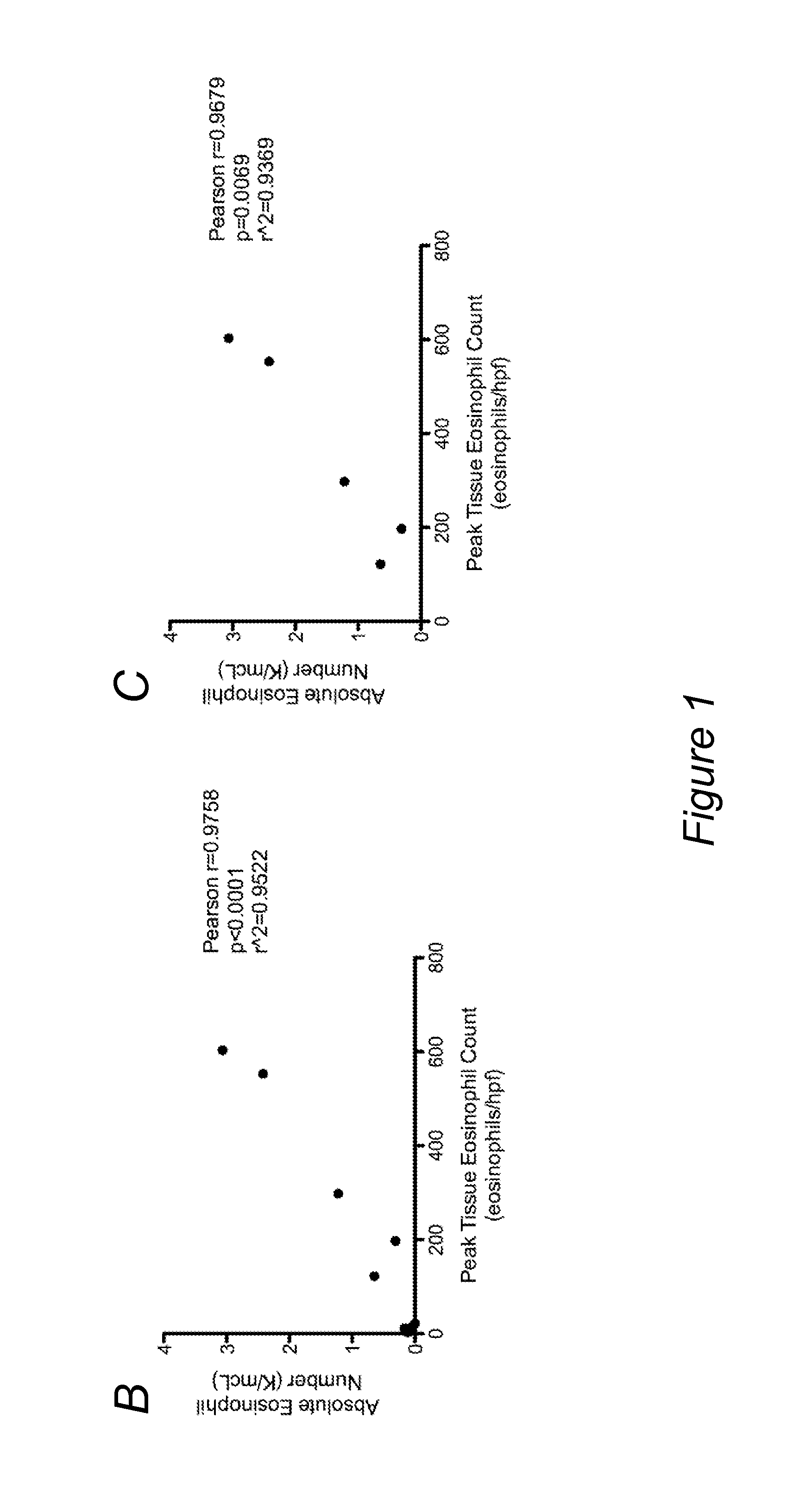Molecular diagnostic panel of eosinophilic gastrointestinal disorders
a gastrointestinal disorder and molecular diagnostic panel technology, applied in the field of diagnosis and treatment of an eosinophilic gastritis (eg) disease state, can solve the problems of less well-studied and less well-established diagnostic criteria
- Summary
- Abstract
- Description
- Claims
- Application Information
AI Technical Summary
Benefits of technology
Problems solved by technology
Method used
Image
Examples
example 1
Patient Selection
[0105]Entry criteria were that patients who had signs and symptoms consistent with upper GI tract disease and had biopsies that documented active eosinophilic gastritis (EG), with gastric tissue samples preserved for genetic and molecular analyses. The endoscopic procedure at which samples for histopathology, gene microarray, and PCR analyses were obtained was designated the incident endoscopy. All gastric samples used for ancillary studies were obtained from the antrum, and all samples obtained for routine histology and immunohistochemistry were obtained from the antrum or antrum / body.
[0106]Active EG was defined as increased numbers of eosinophils, which were the predominant inflammatory cells in some areas, in a gastric biopsy that showed architectural abnormalities, including excessively branched and / or coiled glands. Similar criteria were used to diagnose eosinophilic duodenitis (ED), eosinophilic jejunitis (EJ), and eosinophilic colitis (EC). Eosinophilic esoph...
example 2
Histopathology and Genetic and Molecular Analysis
Biopsy Preparation
[0108]Samples were obtained at the incident endoscopy from the duodenum, stomach, and esophagus of all patients. Some patients also had colonoscopy. Biopsies for histologic evaluation were fixed in 10% formalin, routinely processed, and embedded in paraffin. Sections were cut at 5 microns thickness and stained with hematoxylin and eosin or antibody. Alcian blue / PAS stain (Polyscientific, Bay Shore, N.Y.) was also performed on all biopsies.
[0109]Antibody information is provided in Table 1. The antibodies used for immunohistochemical staining in this study, their source, the dilution at which they were used, and the antigen retrieval method applied to the tissue sections are listed. Immunohistochemical stains were performed using a Ventana Benchmark XT automated immunostainer (Ventana, Tucson, Ariz.).
Quantitative Microscopy
[0110]Multiple levels of gastric biopsies were surveyed, the area containing ...
example 3
Cell Culture and Treatment
Culture of Primary Esophageal Epithelial Cells
[0115]A sample of distal esophageal epithelium was collected during incident or other endoscopy. Following digestion with trypsin / EDTA, biopsy samples were cultured in modified F-media (3:1 F-12 / Dulbecco modified Eagle's medium) supplemented with FBS (5%), adenine (24.2 μg / ml), cholera toxin (10-4 μmol / L), insulin (5 μg / ml), hydrocortisone (0.4 μg / ml), and epidermal growth factor (10 ng / ml) in the presence of penicillin, streptomycin, and amphotericin (Invitrogen). Cultures were supplemented with 1 to 5×105 feeders (NIH 3T3 J2 cells irradiated 6000 rad). Media were changed twice weekly. Upon reaching confluency, cells were trypsinized and re-plated for experiments.
Culture of Cell Lines and Cytokine Treatment
[0116]Cells from human esophageal cell line TE-7 (IARC, Lyon, France) were maintained in RPMI medium (Invitrogen) supplemented with 5% FBS (Atlanta Biologicals, Lawrenceville, Ga.) and 1% penicillin / streptomy...
PUM
| Property | Measurement | Unit |
|---|---|---|
| Level | aaaaa | aaaaa |
| Exposure limit | aaaaa | aaaaa |
Abstract
Description
Claims
Application Information
 Login to View More
Login to View More - R&D
- Intellectual Property
- Life Sciences
- Materials
- Tech Scout
- Unparalleled Data Quality
- Higher Quality Content
- 60% Fewer Hallucinations
Browse by: Latest US Patents, China's latest patents, Technical Efficacy Thesaurus, Application Domain, Technology Topic, Popular Technical Reports.
© 2025 PatSnap. All rights reserved.Legal|Privacy policy|Modern Slavery Act Transparency Statement|Sitemap|About US| Contact US: help@patsnap.com



